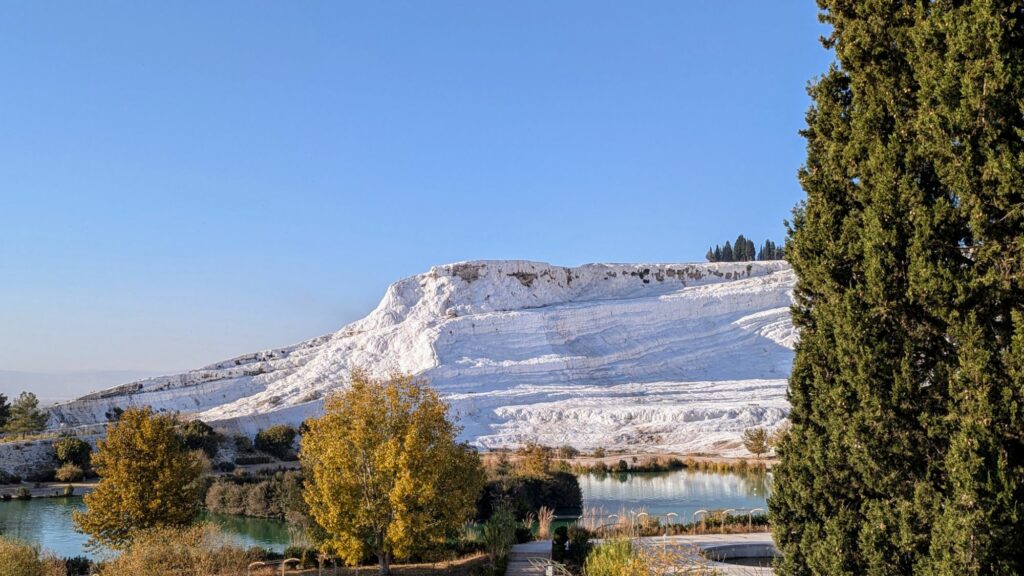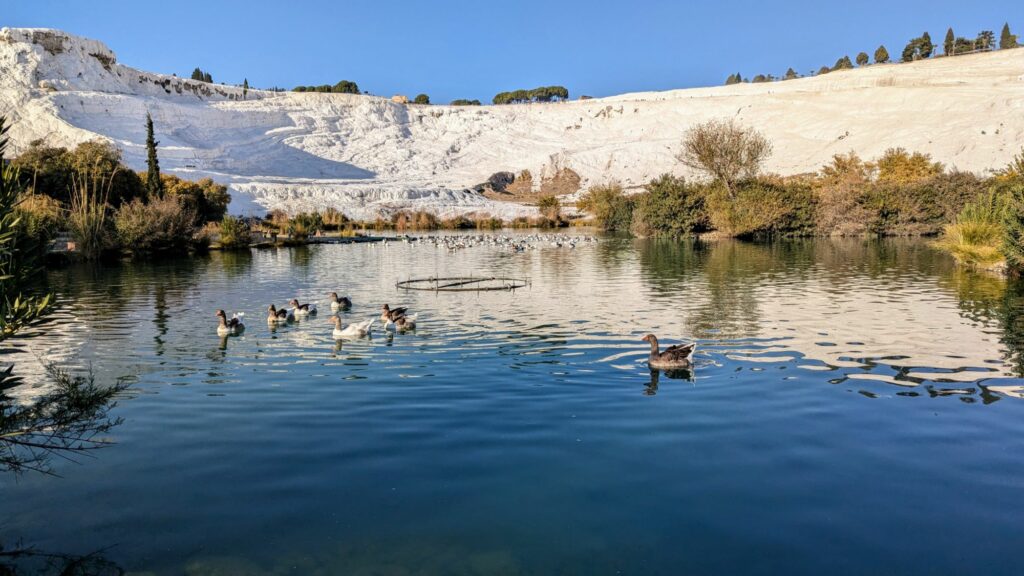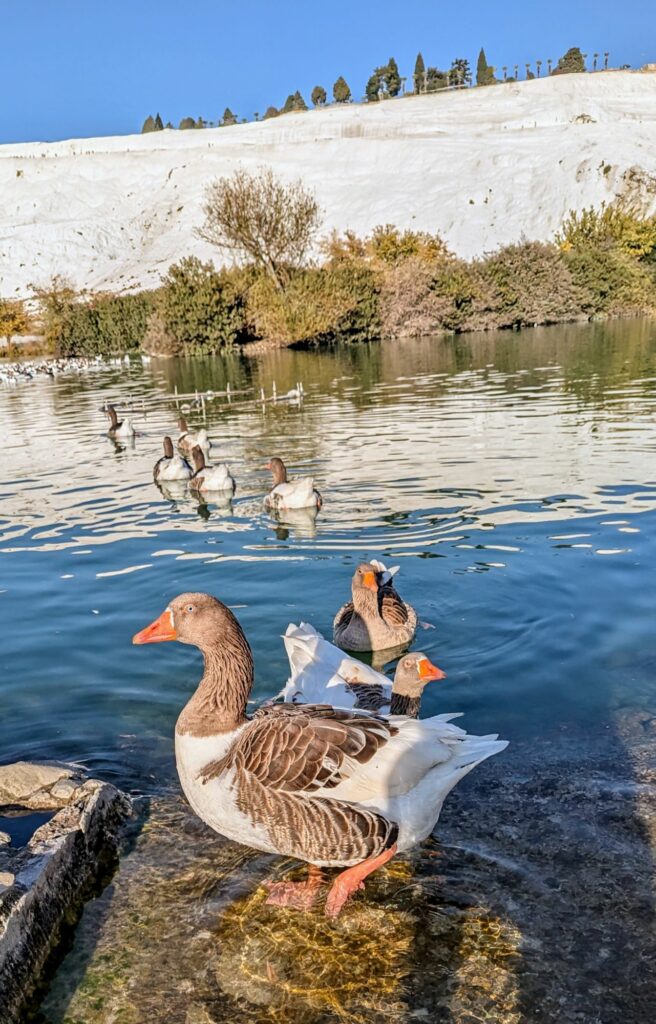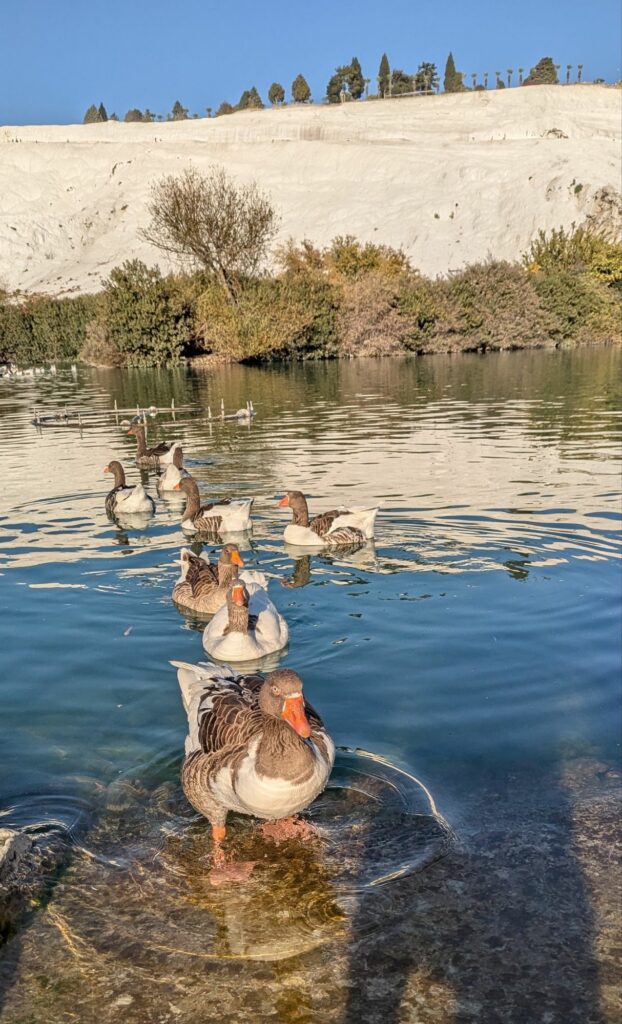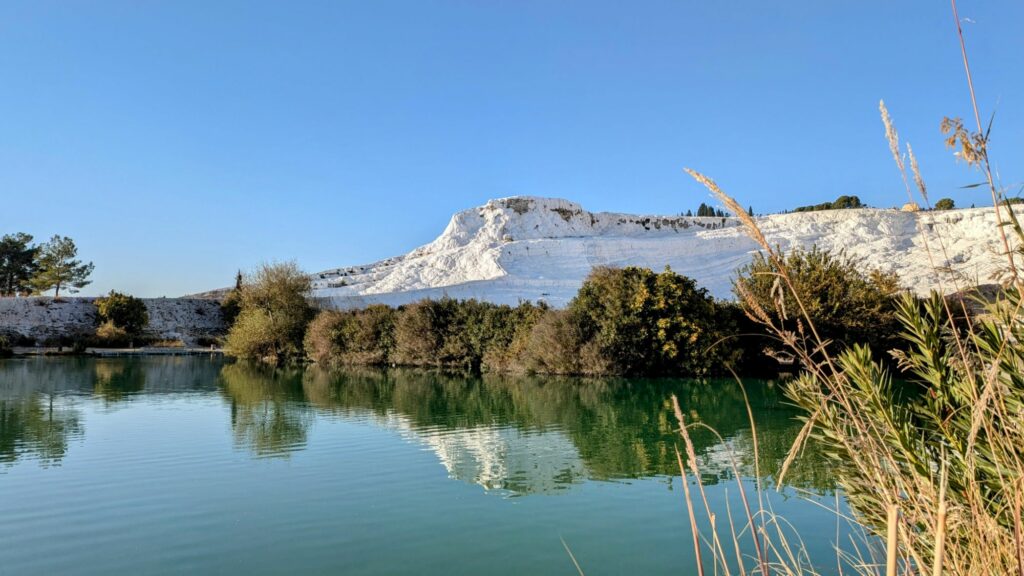I first saw pictures of Pamukkale 30 or so years ago and it immediately went on my “bucket list”. Pamukkale means “cotton castle” and refers to the unique calcium laden hot springs gushing out from the earth. These springs high up a mountain top have, over the millenia deposited limestone all down one face of the mountain forming limestone rivulets and a number of “baths” known as travertines. The dazzling white contrasted with the pale blue water is otherworldly.
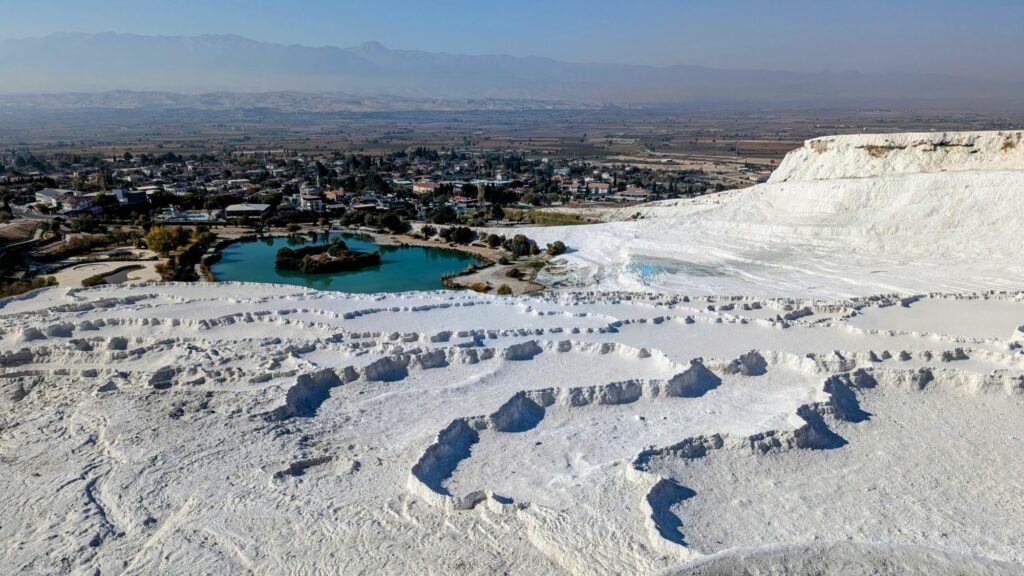

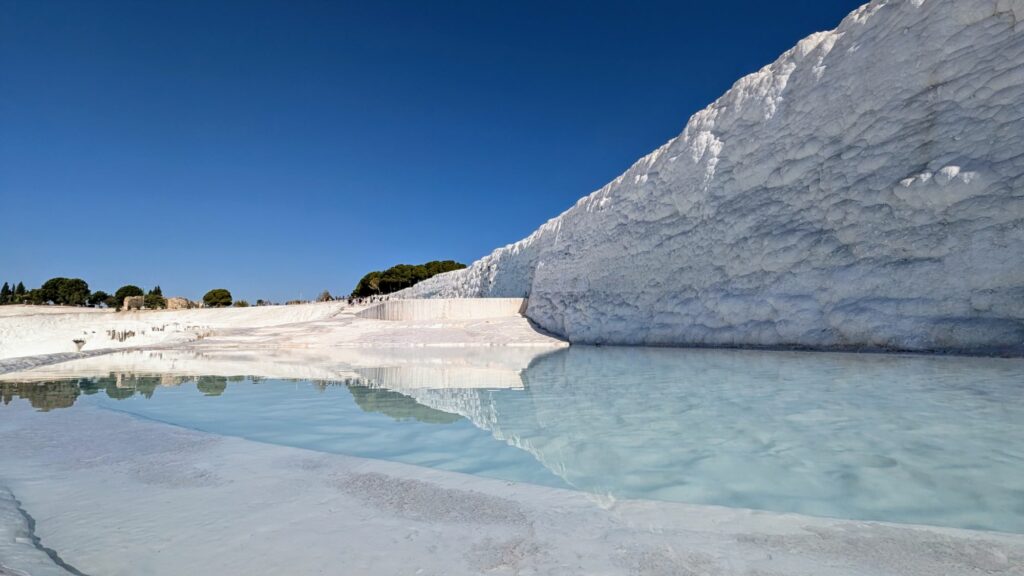
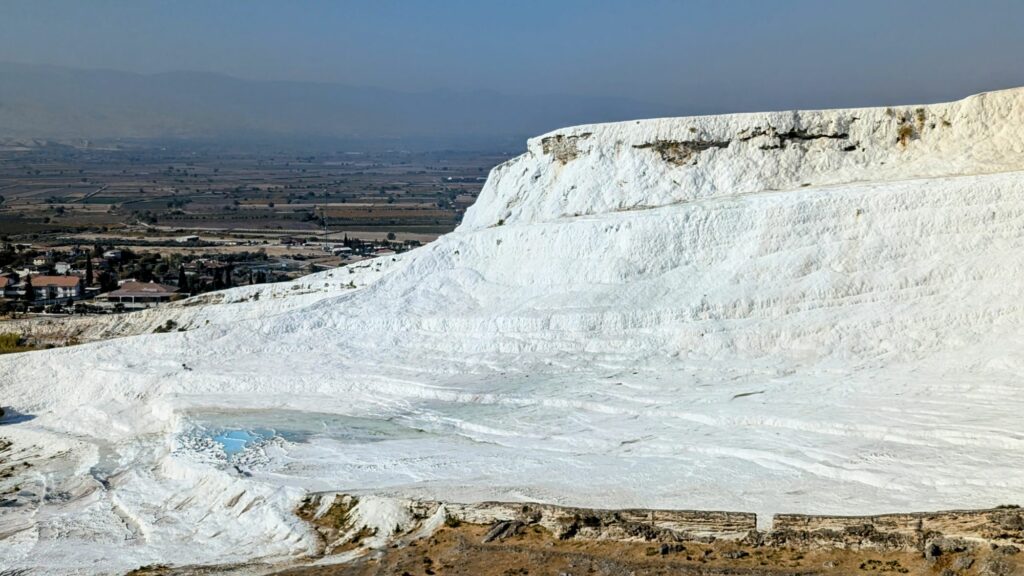
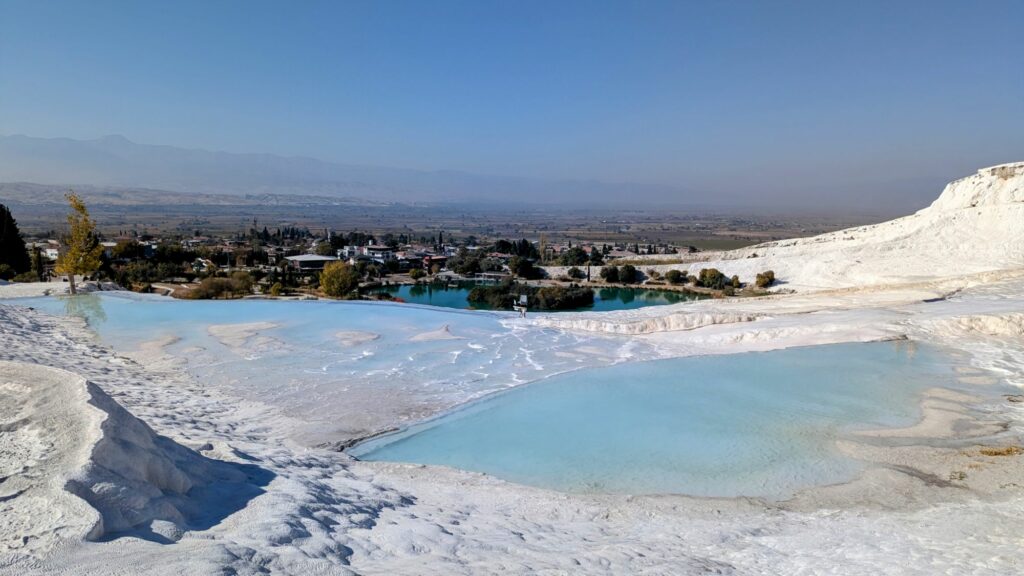
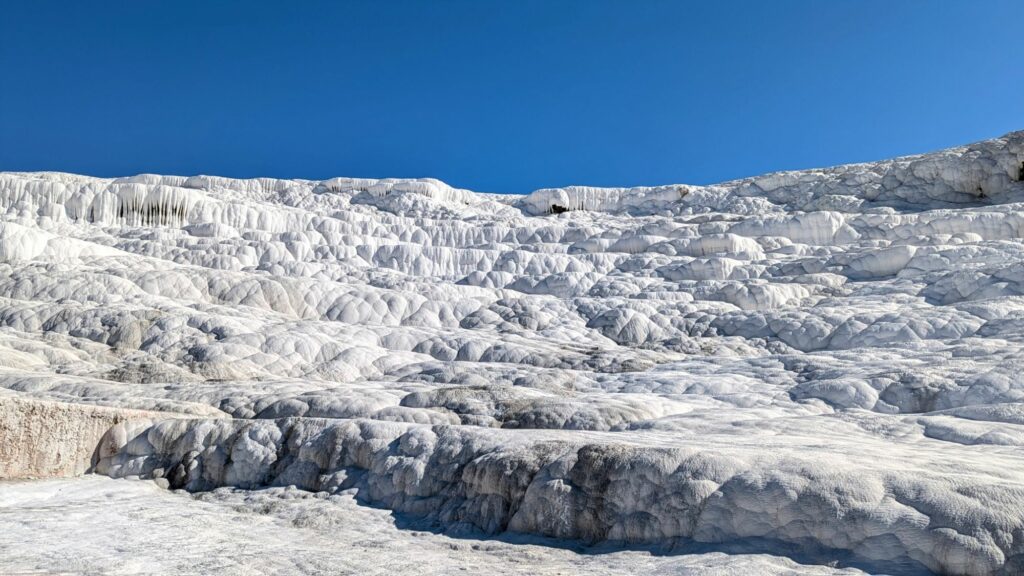
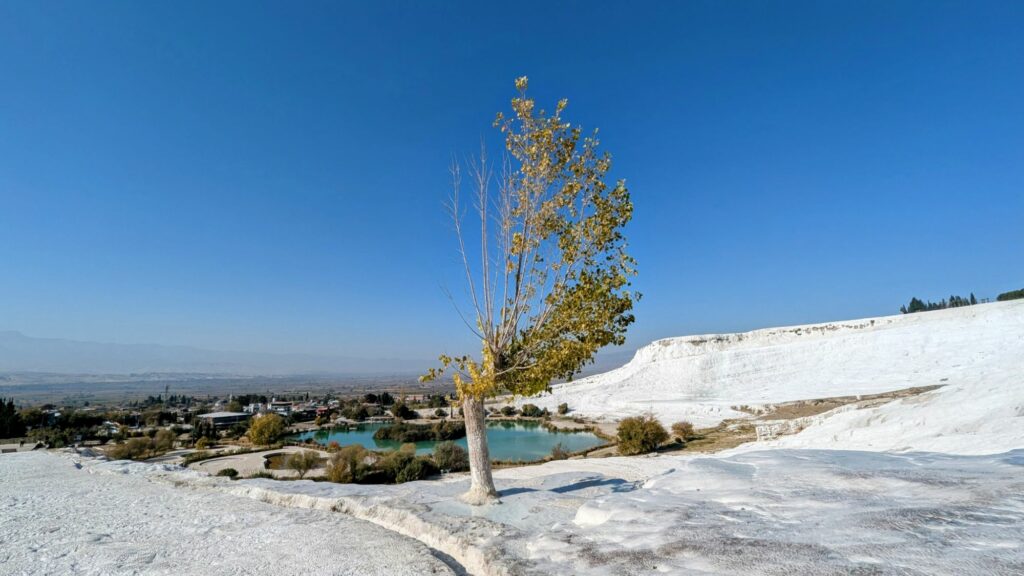
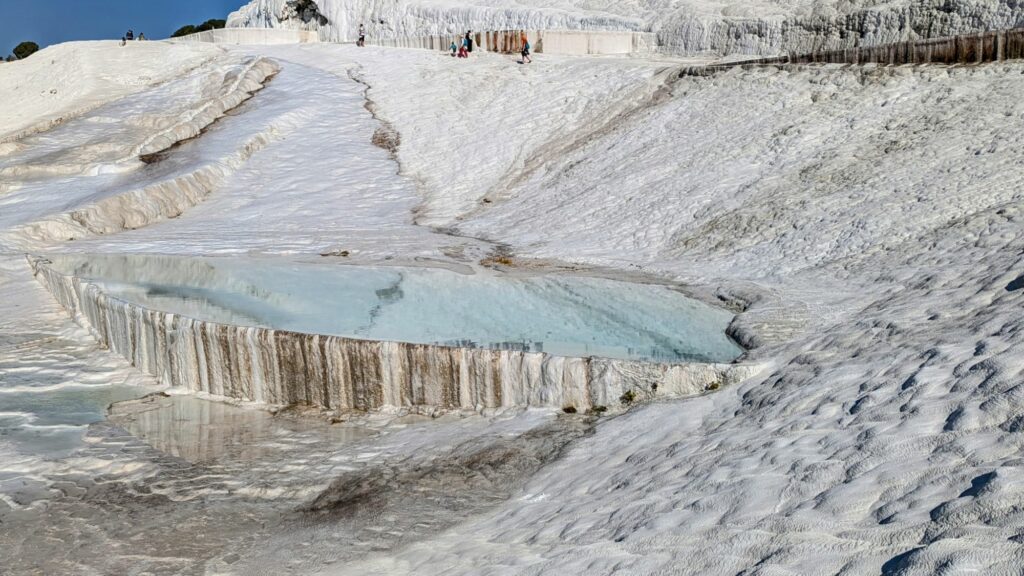
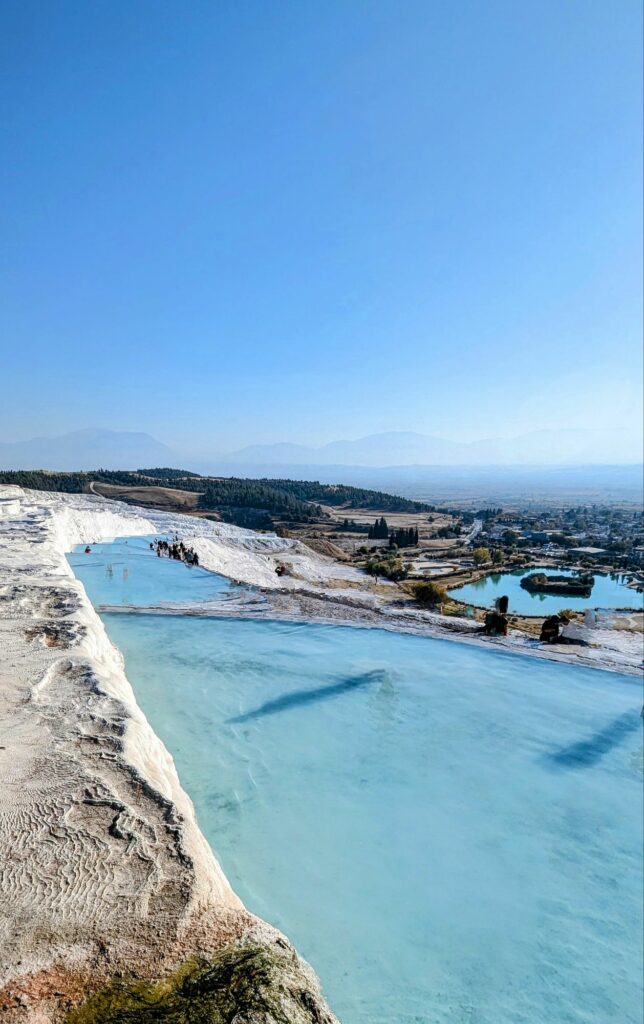
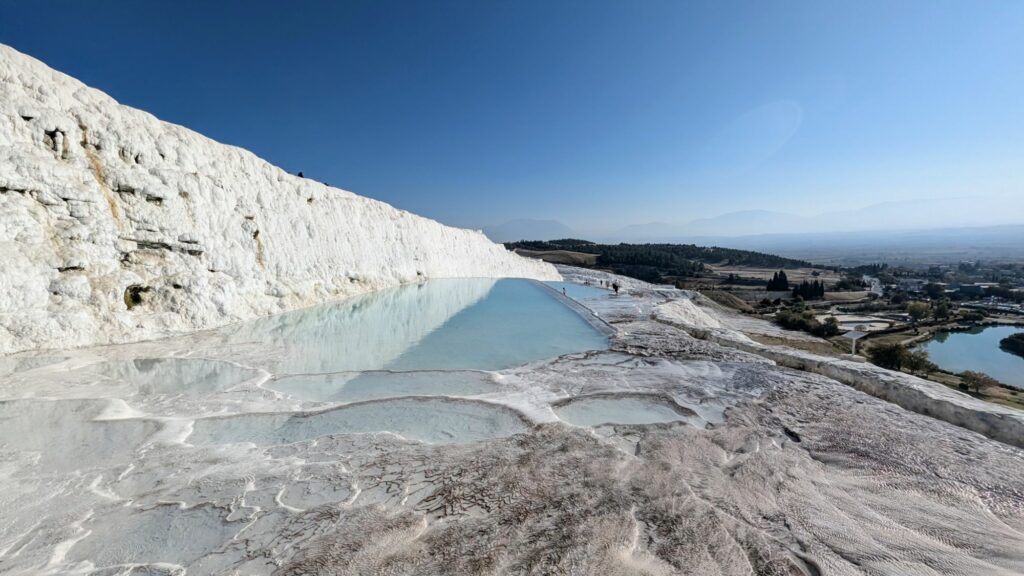
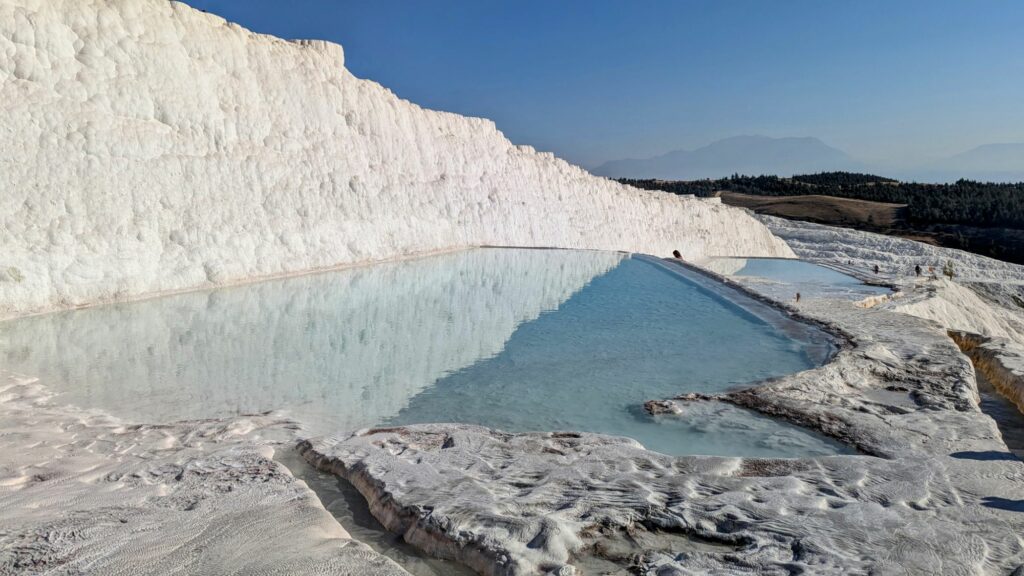
The Romans also “discovered” this spot and set about building a spa city, Hieropolis, as the hot mineral rich water was believed to have healing properties. The result is the unique natural landscape combined with an impressive ancient Roman city with impressive ruins to visit.
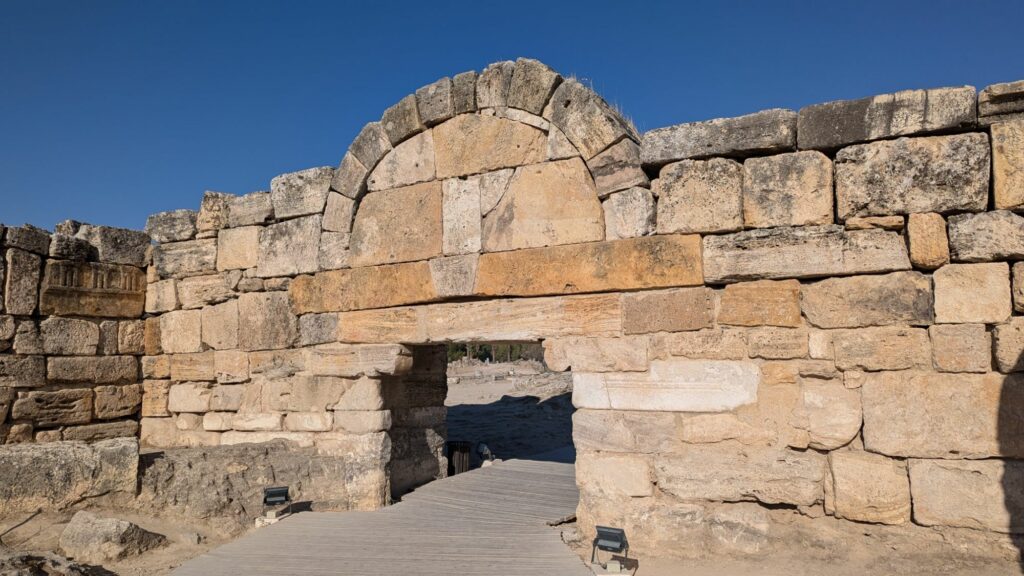
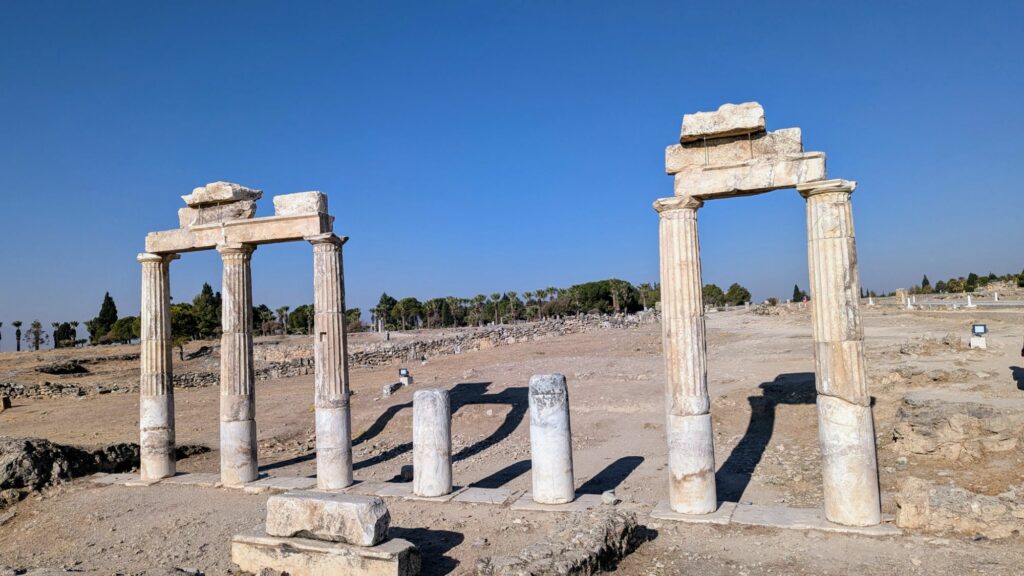
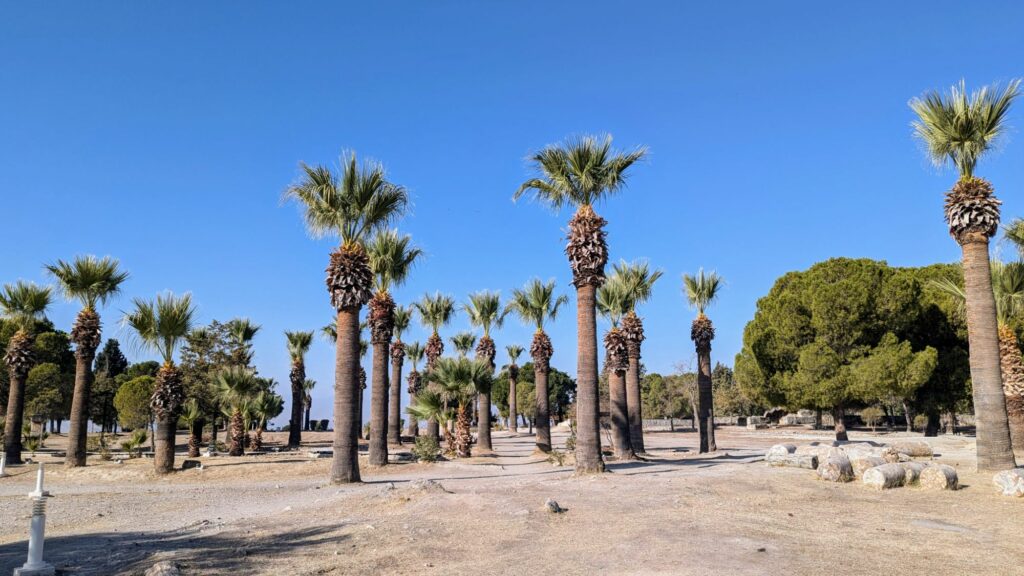
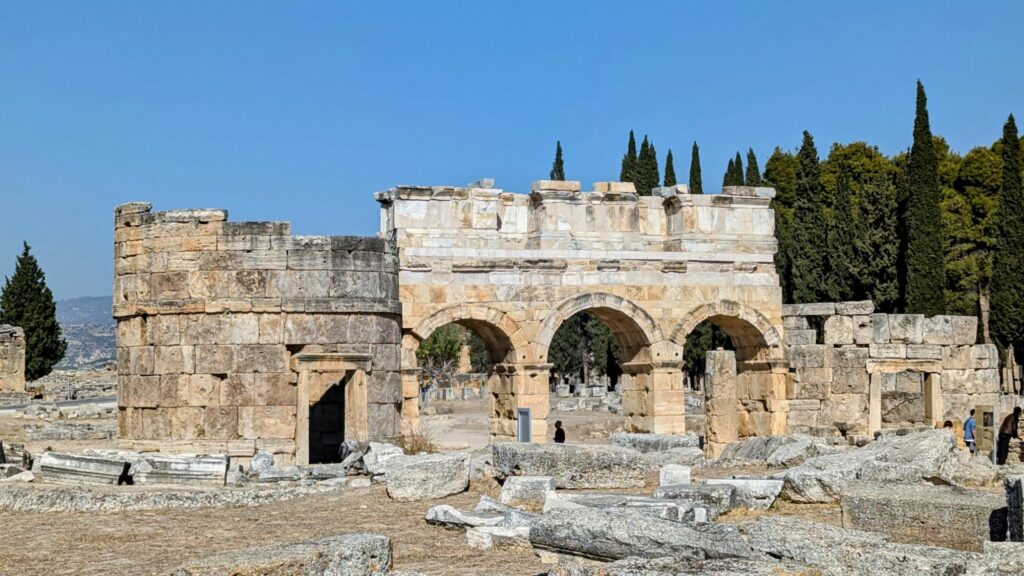
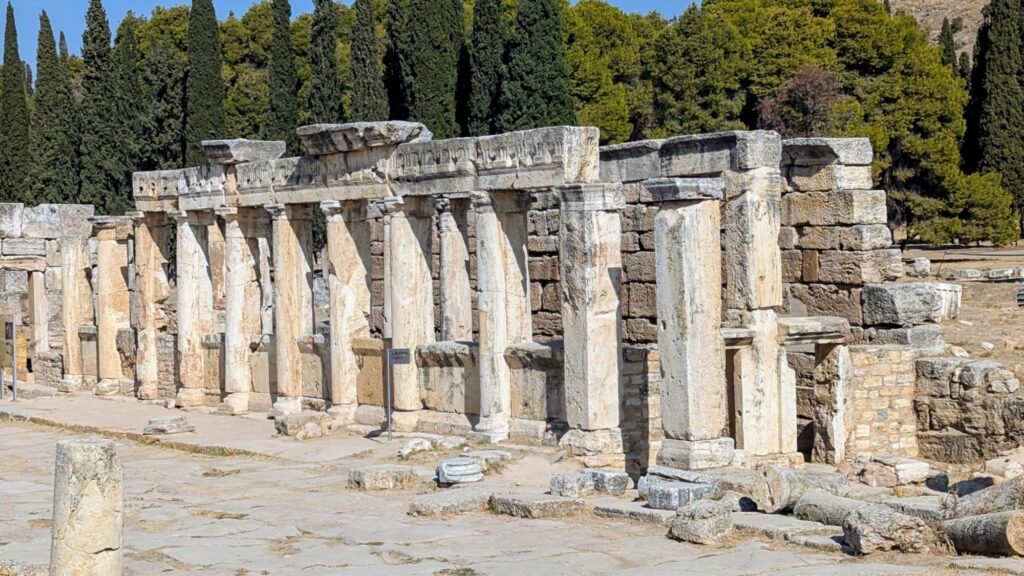
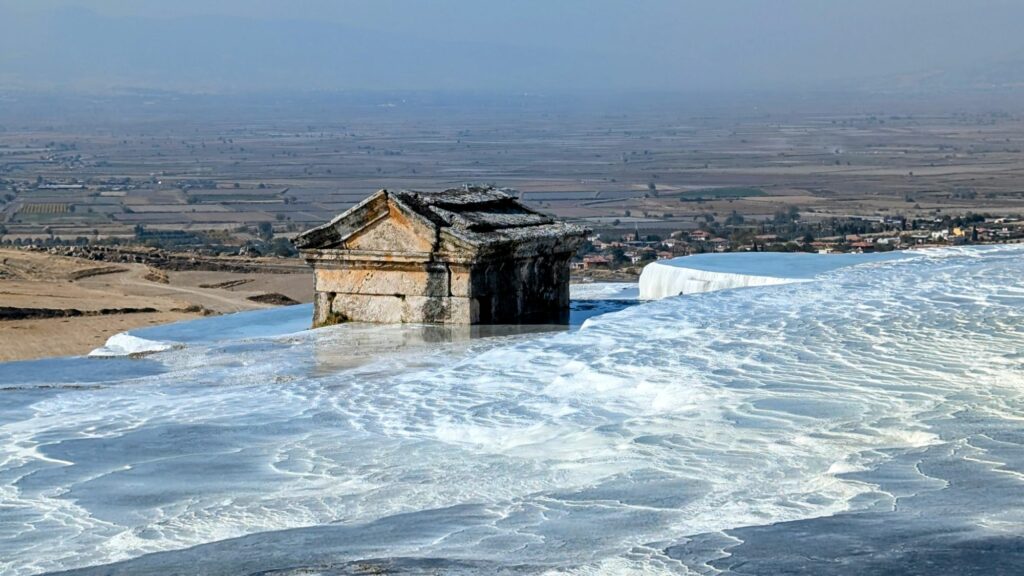
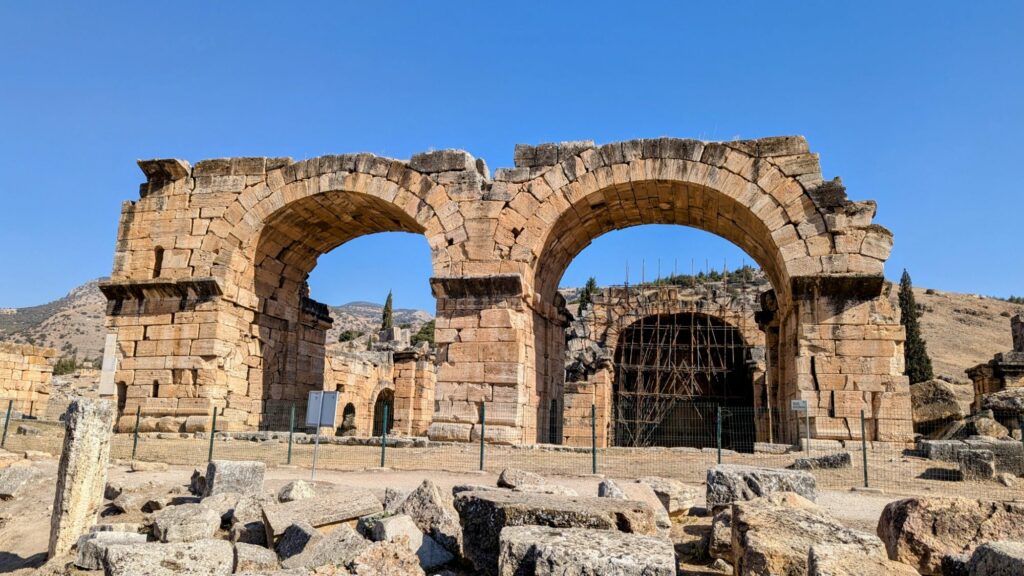
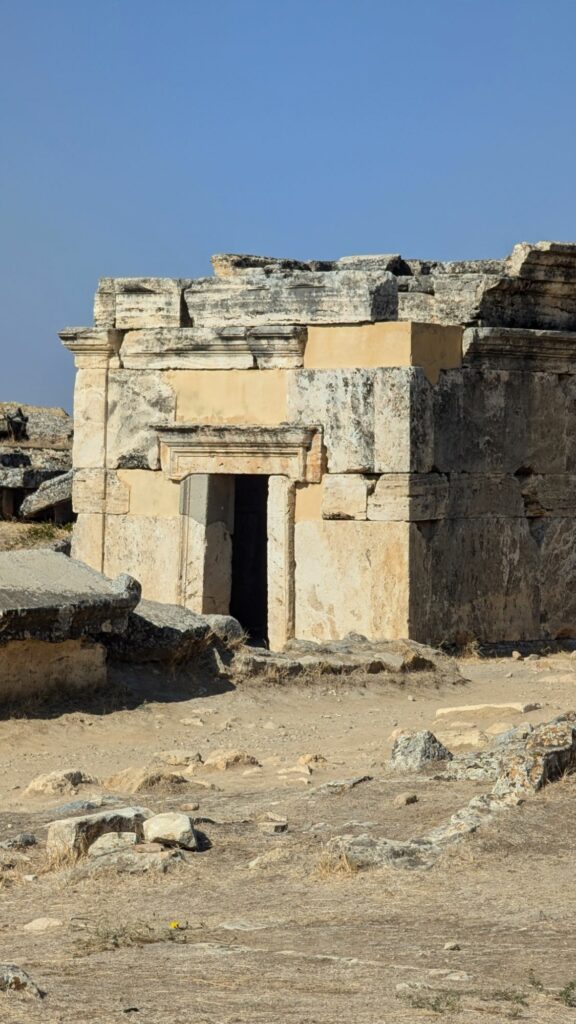

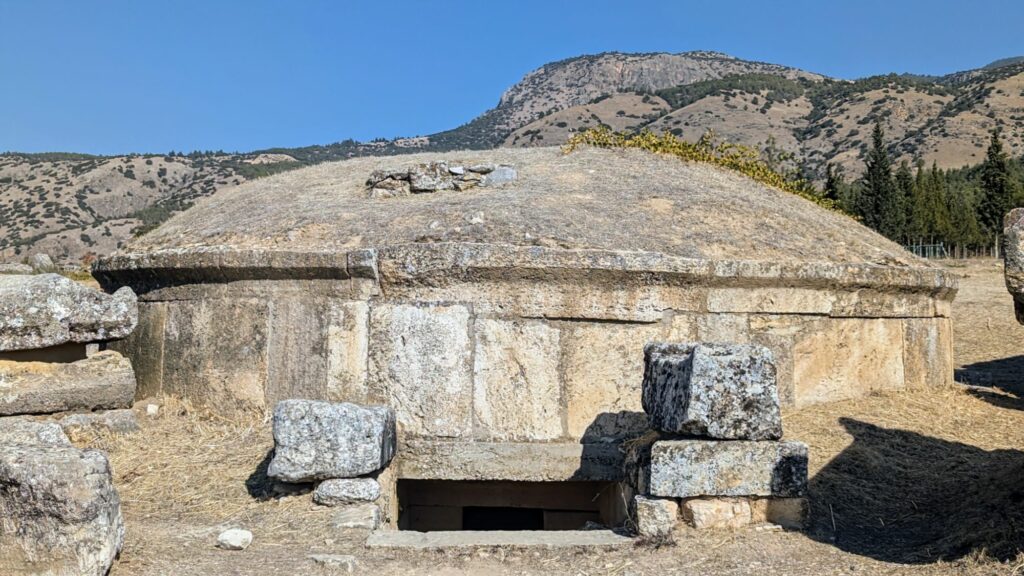
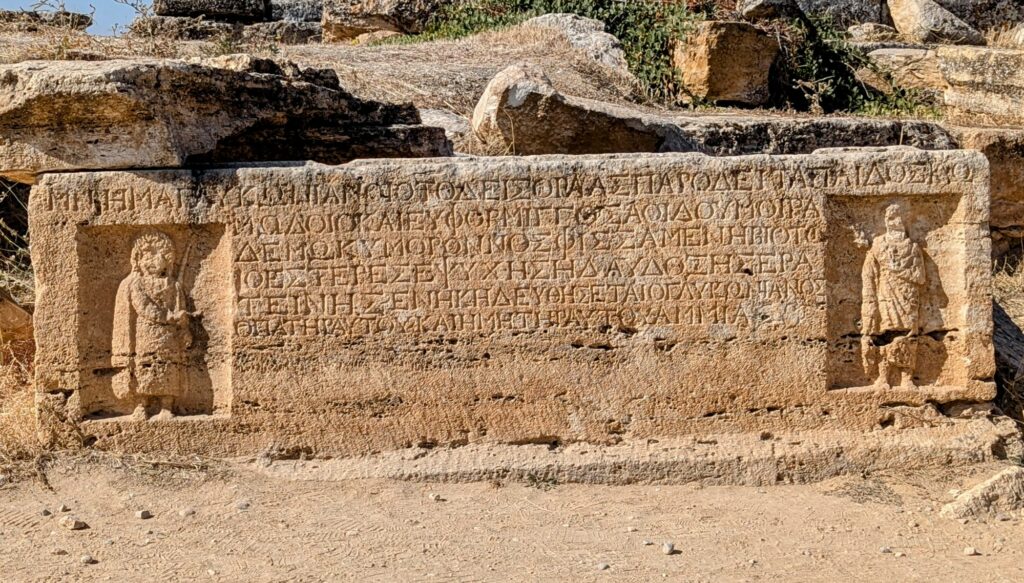
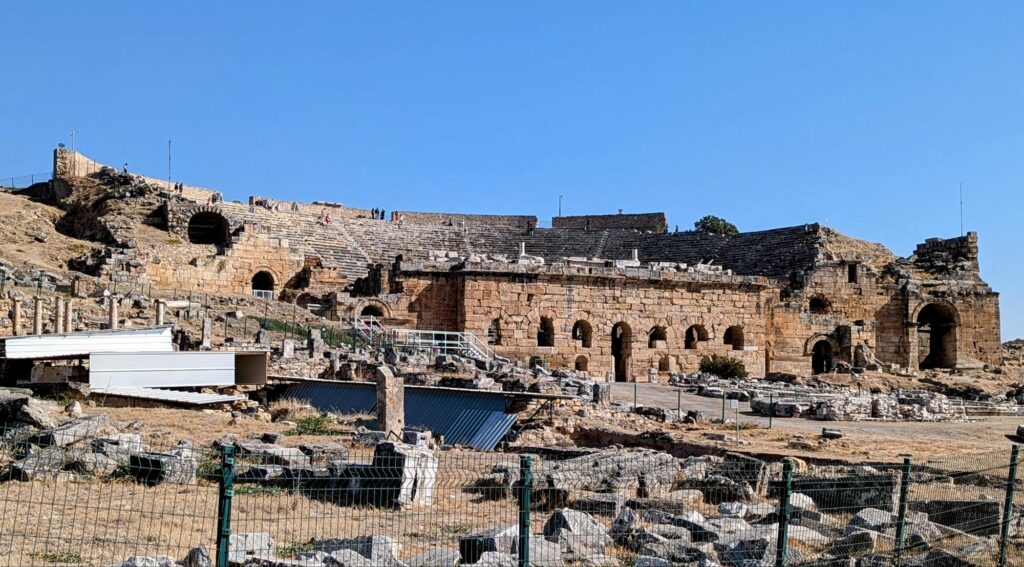
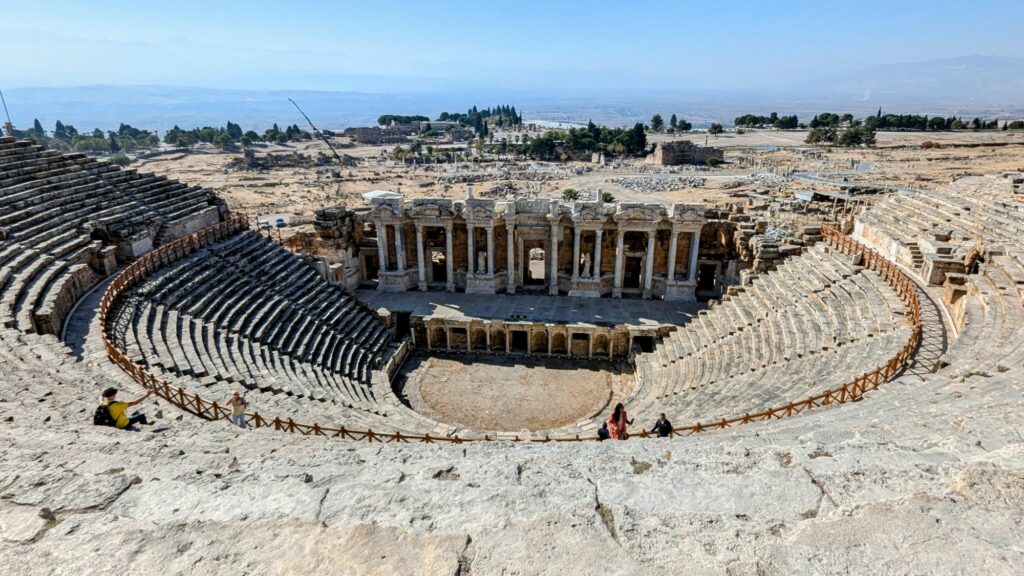
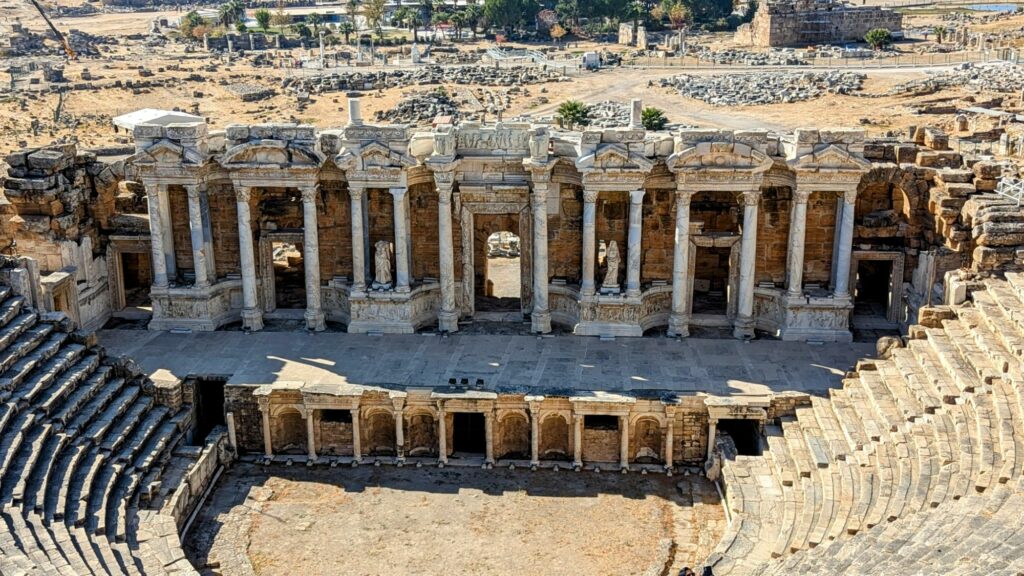
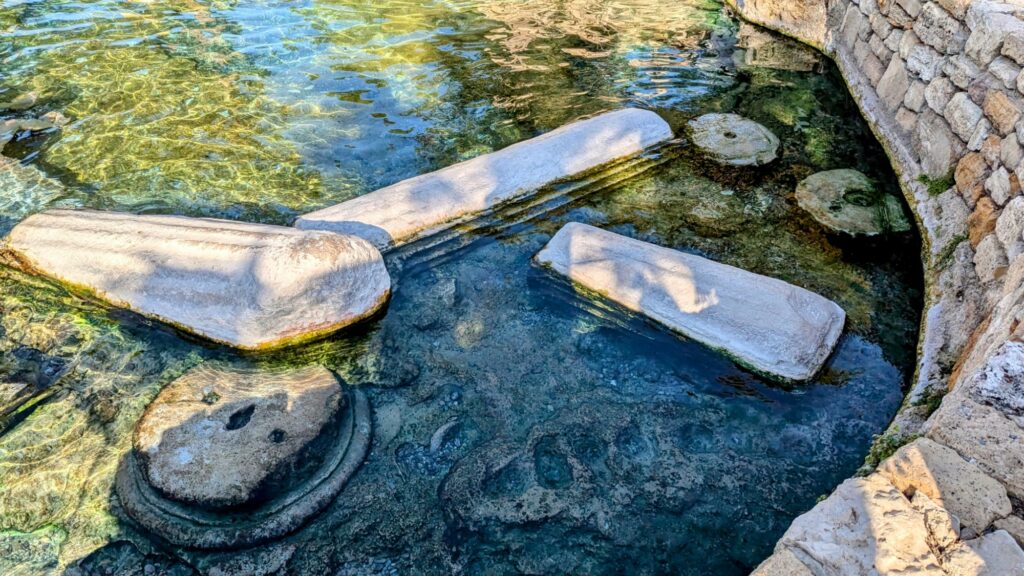
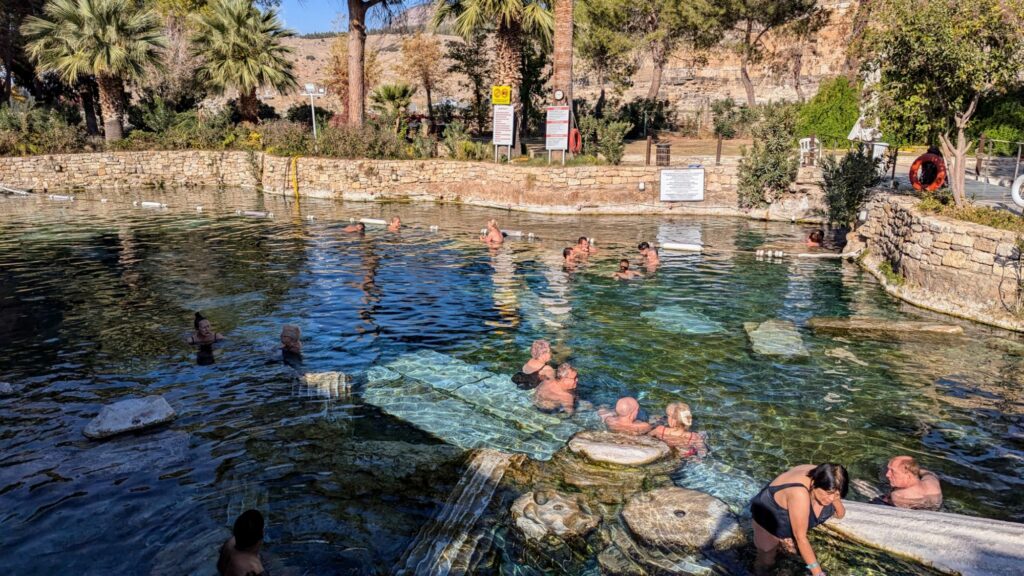
As a postscript the grounds also include the site of St Phillip the apostle’s martyrdom. St Phillip is mentioned a number of times in the bible. He was present at Jesus’ baptism and the wedding feast at Canaa. After Jesus’ crucifixion and resurrection he went to Greece, Syria and Asia Minor to preach. He arrived in Heiropolis and his teachings impressed the Roman proconsul’s wife. The result is a death penalty for him proclaimed by the proconsul. He was crucified upsidedown. He spoke from the cross and impressed the people and the proconsul to the point where they offered to spare him. He declined, opting for martyrdom. The site is marked by the pillars of an octagonal church and below that his tomb which became a pilgrimage destination.
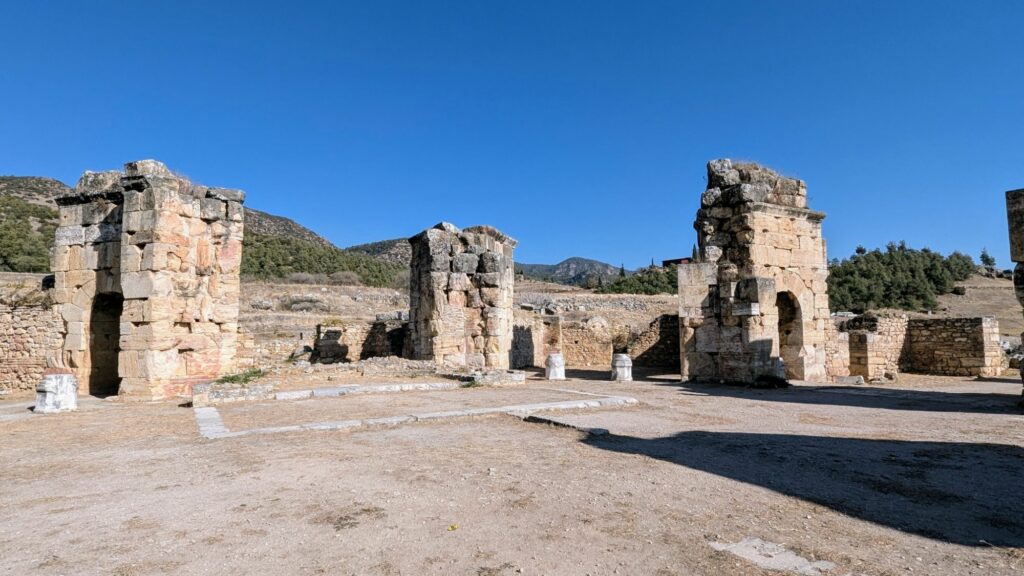
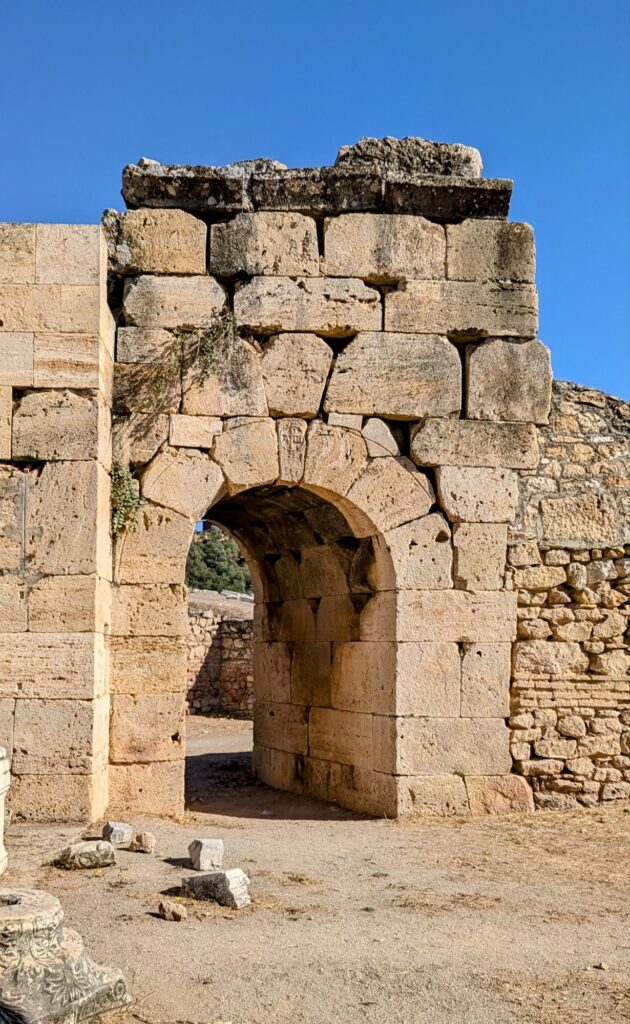
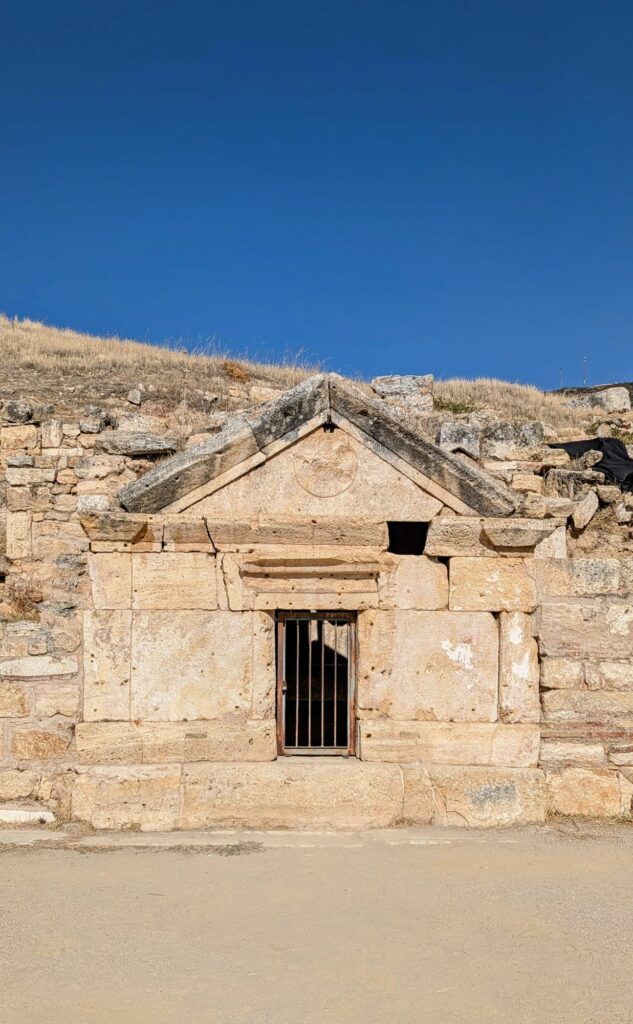
Down at ground level is a different perspective with a reflective blue lake and a gaggle of boisterous honking geese.
